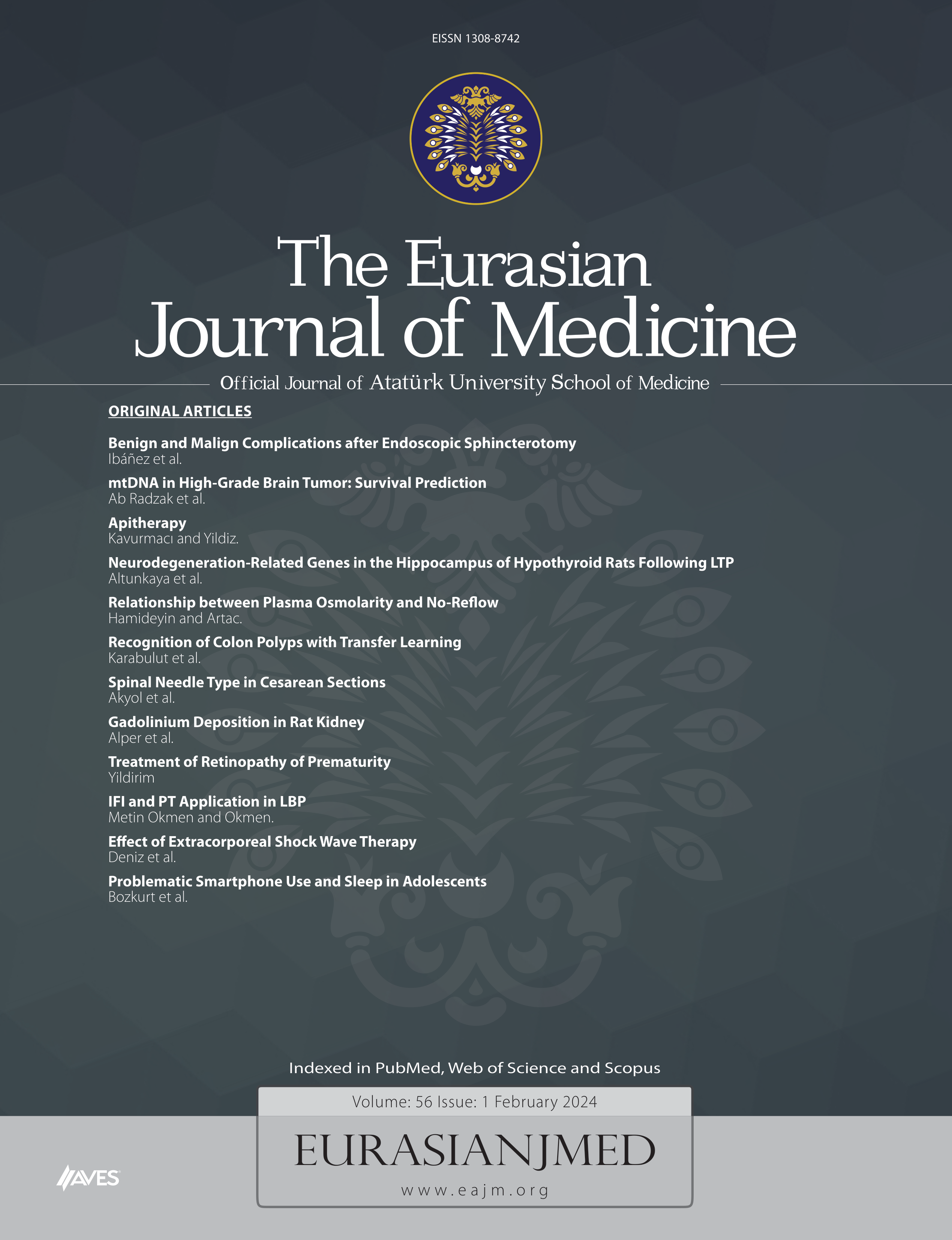Abstract
Objective: We investigated the relationship between the maximum standardized uptake value (SUVmax) of whole-body positron emission tomography/computed tomography (PET/CT) performed before treatment and the demographical and histopathological features in locally advanced breast cancer (LABC), as well as the role of PET/CT in the evaluation of pathological complete response (pCR) after neoadjuvant chemotherapy (NAC).
Materials and Methods: Fifty-one LABC patients who received NAC in our center between 2011 and 2015 were retrospectively analyzed. Basal PET/CT was performed in all the patients before NAC. The SUVmax levels and demographical and histopathological results were compared. The relationship between the SUVmax values after NAC and pathological responses were evaluated.
Results: The mean age of the patients was 49 (32-69) years. PET/CT performed after NAC showed complete response in 20 patients (39.2%), partial response in 28 patients (54.9%), stable disease in 2 patients (3.9%), and progressive disease in 1 patient (2%). There was no significant difference between the mean SUVmax values of the patients according to age (>50 and ≤50 years), menopausal status, tumor localization, clinical stage, and grade. The mean SUVmax value was higher in the triple-negative group than those in the HER2 positive and luminal groups. There was a significant difference in the SUVmax values between the group that achieved pCR after NAC and the group that could not achieve pCR (SUVmax value for breast 2.92 vs. 0.30; p=0.01; SUVmax value for axilla 1.5 vs. 0.0, p=0.02).
Conclusion: The SUVmax values are independent of demographical features. There was a significant relationship between the pCR and SUVmax values after NAC. PET/CT could be useful in the evaluation of patients to predict the biological characteristics of tumors.
Cite this article as: Yildirim N, Simsek M, Aldemin MN, Bilici M, Tekin SB. The Relationship between 18-FDG-PET/CT and Clinicopathologic Features, Pathologic Response in Patients with Locally Advanced Breast Cancer. Eurasian J Med 2019; 51(2): 153-8.

.png)

.png)
.png)